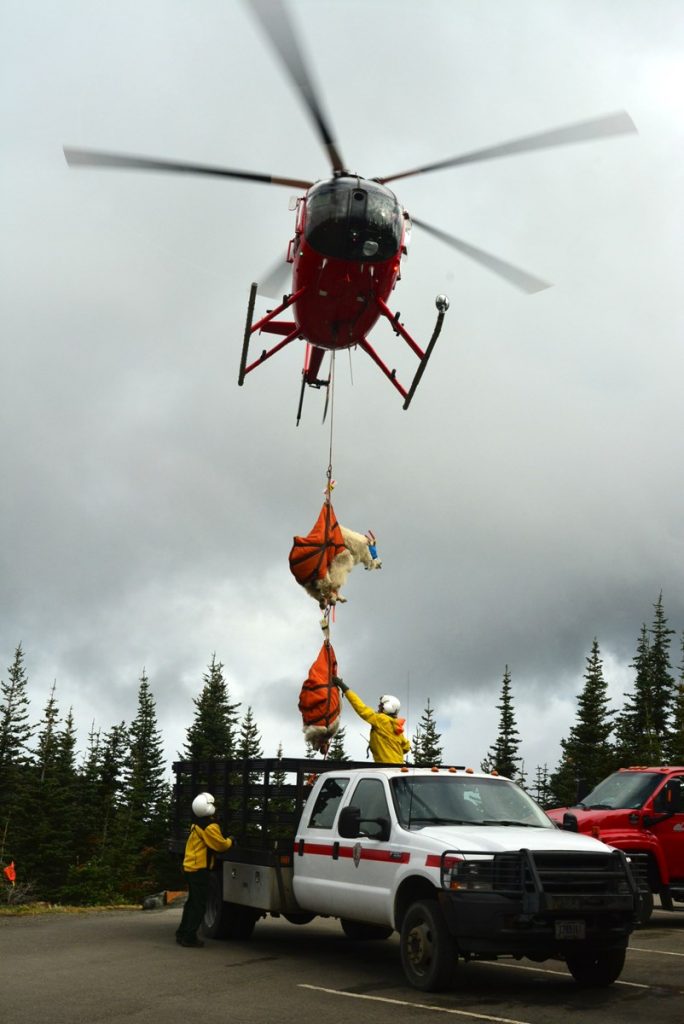
Final Round Of OlyPen Mountain Goat Translocation To Start; Lethal Removals Begin This Fall
Federal and state wildlife and land managers will begin the final round of moving mountain goats off the Olympic Peninsula and over to the Cascades later this month, with lethal removals scheduled to begin afterwards.

Earlier this year WDFW put out a call for volunteers to assist in the latter portion of the effort to reduce numbers of the nonnatives species in the peninsula’s rugged interior. Applications were sent to National Park Service managers for review, and we’ll update this blog with more details on that as they come in.
So far since the operation began in September 2018 following lengthy public input, 275 goats have been captured and moved to the Northern and Central Cascades, helping to rebuild herd numbers there.
Fifty-one others were either transferred to zoos, dying during capture or transport, or euthanized due to health or other reasons.
Those caught during helicopter operations this summer will be translocated to nine sites between Darrington and Snoqualmie Pass, with three more on the east slopes of the range.
“The mountain goat relocations not only augment resident populations, increasing population viability, but tracking the collared goats assists with our understanding of goats use of the habitat within the North Cascades” said Phyllis Reed, a Forest Service wildlife biologist, in a press release.
An estimated 725 animals roamed the Olympics before translocations began. Around 10 goats from Alaska and the Canadian Rockies were let loose on the peninsula in the 1920s for hunting before in 1938 their prime alpine habitat was designated a national park, where pursuit of game isn’t permitted.
This spring WDFW sent out word that Olympic National Park was looking for “skilled volunteers” to help with lethal removals in September and October.
Applicants needed to be able to hike “up to 15 miles a day through park wilderness, much of which will be off trail in predominantly steep and extremely challenging terrain.”
Those chosen would also need to attend a training day before removal operations and pass a background check.
Designated shooters would need to “pass a firearms proficiency test (which will be administered during each training).” They also need to use nontoxic bullets.
Other partners include the National Park Service, and many Puget Sound tribes have supported or volunteered on the project.
